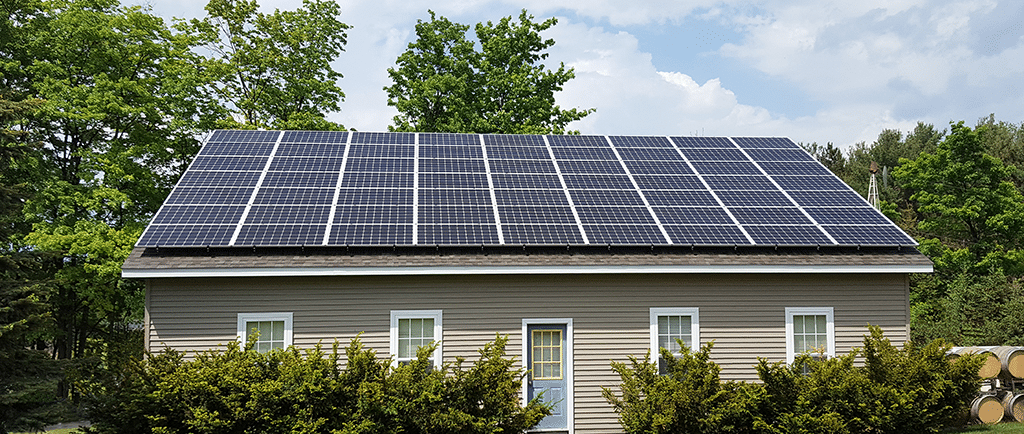Here we go again: Another analysis of solar’s effects on the grid reveals that, at least at current penetration levels, solar customers do not have a negative impact on non-solar customers’ bills.
Michigan asked the Institute for Energy Innovation (IEI) to evaluate solar users’ effects on the grid to provide raw data for a Public Service Commission (MPSC) study required under Michigan’s new Clean and Renewable Energy and Energy Waste Reduction Act, which took effect April 20.
The law requires the MPSC to create new electricity rate structures that treat both solar and non-solar ratepayers equally. The IEI report is expected to give the MPSC the raw data necessary to make informed decisions as they wrestle with the new rate design.
The study, titled Solar Energy in Michigan: The Economic Impact of Distributed Generation (DG) on Non-Solar Customers, found solar users are – say it with us now – supporting the grid and therefore should not be subject to extra charges by utilities because they’ve installed solar on their rooftops.
“The vast majority studies on the value of solar conclude that customers with solar DG systems who participate in ‘net metering’ programs represent a net benefit to all utility customers and the electric grid as a whole,” said Dan Scripps, president of IEI. “While they receive credits that reduce or eliminate their monthly utility bills, the energy they generate provides real benefits to the power system and should be considered when evaluating the impact of solar DG.”
It should be noted that IEI’s findings aren’t an enormous surprise. Although several large retailers in Michigan have gone solar, including Ford, General Motors and IKEA, the overall penetration of solar in the state is relatively small. By the end of 2016, Michigan had 37.5 MW installed, according the Solar Energy Industries Association (SEIA). To put this in perspective, California installed 5,212 MW in 2016 alone.
Still, in states with lower solar penetrations, the evidence just keeps piling up. More than 30 studies have indicated this essential truth, but utilities around the country still insist solar users to don’t pay their fair share of grid upkeep. At the levels solar penetration stand today in most states that argument is complete nonsense – but it does create an “us vs. them” split between solar adapters and non-solar customers that effectively gums up the discussion – more often than not to the utilities’ favor.
It also allows utilities to argue (usually unsuccessfully, as the latest 50 States of Solar report shows) that they should be able to impose special demand charges/user fees only on solar users.
“Our report found that customers with rooftop solar systems are not only paying their fair share, they’re actually helping to reduce costs for their neighbors as well,” Scripps said. “Specifically, the benefits of solar DG exceed the retail cost of electricity and the value of solar is greater than the compensation solar DG customers receive under net metering programs. It’s hard to justify adding additional costs to those already providing more benefit than they receive.”
The IEI evaluated more than 40 solar value studies from across the nation as well as nine additional studies not included in any previous meta-analyses. A majority of the studies cited in the IEI report found:
- While net metering customers receive credits that reduce or eliminate their monthly utility bills, solar DG provides measurable benefits to the power system that should be considered when evaluating the true impact of solar DG and net metering on all ratepayers.
- Solar DG both reduces demand for power from the utility and provides power to the grid when the systems generate more power than is used at a residential or commercial site. This surplus power is generated at or near peak times, when the cost to the utility of procuring additional power is most expensive.
- Net metering represents an attempt to balance the true costs and benefits of the energy being produced and that which is consumed in a way that is simple, fair, and convenient for both the utility and its customers. Any new rate structure covering distributed generation systems should fully compensate customers for the value their systems provide.
This content is protected by copyright and may not be reused. If you want to cooperate with us and would like to reuse some of our content, please contact: editors@pv-magazine.com.








Shame on these utilities.
In a position of tremendous wealth and power for decades… and they have a single mind. In such a position, they could have quickly embraced, even supported solar earlier than any solar startup. They could have leveraged their existing presence and grid to upgrade and work with customers to come up with plans that benefit both themselves and the customer.
Why is it we get greedy? And would I have done the same as they in their position? Am I any better or would I have become just as greedy? We ought to ask ourselves.
Sad, really.
“Decoupling” (utility profits from sales) remains a key factor in the net-metering scenario. Utilities with this structure give NM a fair evaluation. In our’s, NV Energy, Berkshire Hathaway, Inc. enjoys a happy guaranteed ROI that only encourages tremendous construction, facilities and maintenance investment. The more in-the more ROI.
Buffett has referred to utility ownership as the next best thing to owning a bottomless ATM.